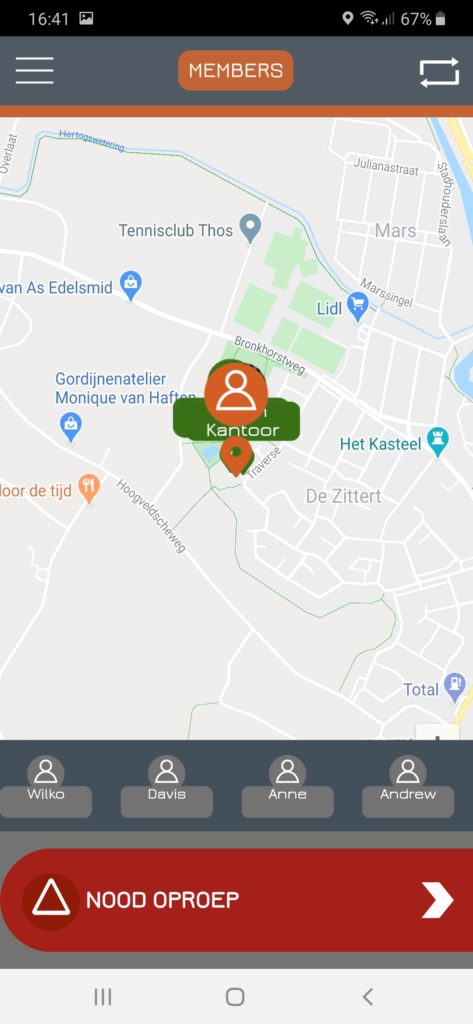11. TRIGGER EMERGENCY ALARM
An emergency alarm can be triggered by hand or automatically if our sensors detect a fall or man-down situation.
To trigger an emergency alarm by hand;
⦁ In the app by moving the red slider to the left (till the end of the screen)
⦁ With the Persafe alarm button (push and hold for 3 seconds)
⦁ With the Persafe badge (push and hold red + green button for 3 seconds)
⦁ With the Persafe badge by double tap on the Badge
To trigger an automatic fall-detected or man-down alarm:
⦁ If you activate the fall-detection function on your phone (button between red and blue slider in the app) and the phone detects an impact (from a fall) and no or little movement after the impact, we trigger an automatic alert. The user can cancel the pre-alarm during a specified time period (variable setting) in the app. The fall detection function activates a number of sensors in your phone that can result in higher battery consumption. Consequently, we recommend using this function during a limited time period (for example during sports, commute, walking on slippery surfaces, etc.) or accept more frequent charging of your phone.
⦁ Persafe Badge contains sensors to detect a man-down and no-movement situation. You can activate and deactivate this function with the fall-detection button in the app (between blue and red slider) when the Badge is connected to your phone via Bluetooth. The Badge detects a man-down and no-movement situation and triggers automatic alarm. The user is notified and has option to cancel the pre-alarm during a specified time period (variable setting) by moving the Badge or cancel the pre-alarm in the app. The Badge has low energy consumption and does not use battery capacity from the phone.
As soon as the user has triggered an alarm, the alarm is send from the phone to the PERSAFE alarm-server. The PERSAFE server distributes the alert notifications to the responders in the alarm circle or the alarm centre (responder alarm circle settings).
If the phone cannot send out the alarm via WIFI or 4G it will automatically switch to 2G. The phone will validate if the alarm has been successfully received by the PERSAFE server. If the phone is not successful in sending the alarm within 40 seconds, it will use SMS (text) messaging to send the alarm (Android only) to the PERSAFE server. This way PERSAFE secures that emergency alarms are always send and received by the PERSAFE alarm-server.



